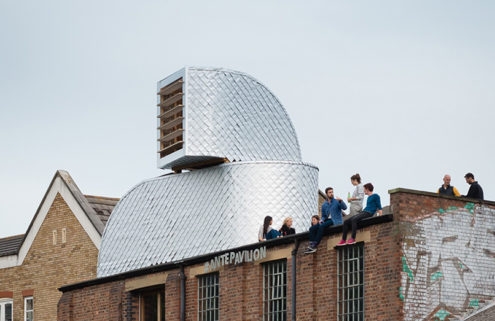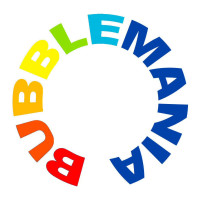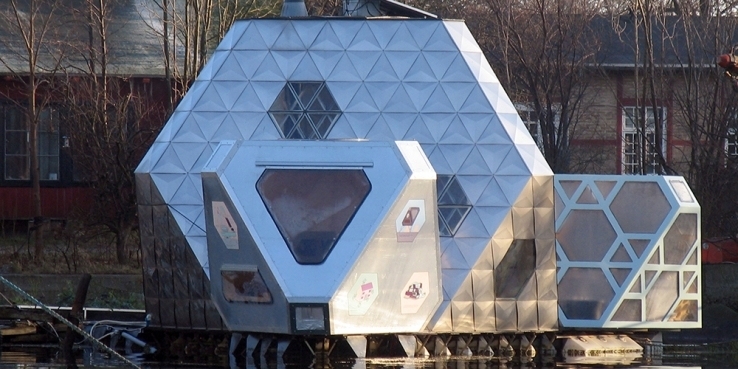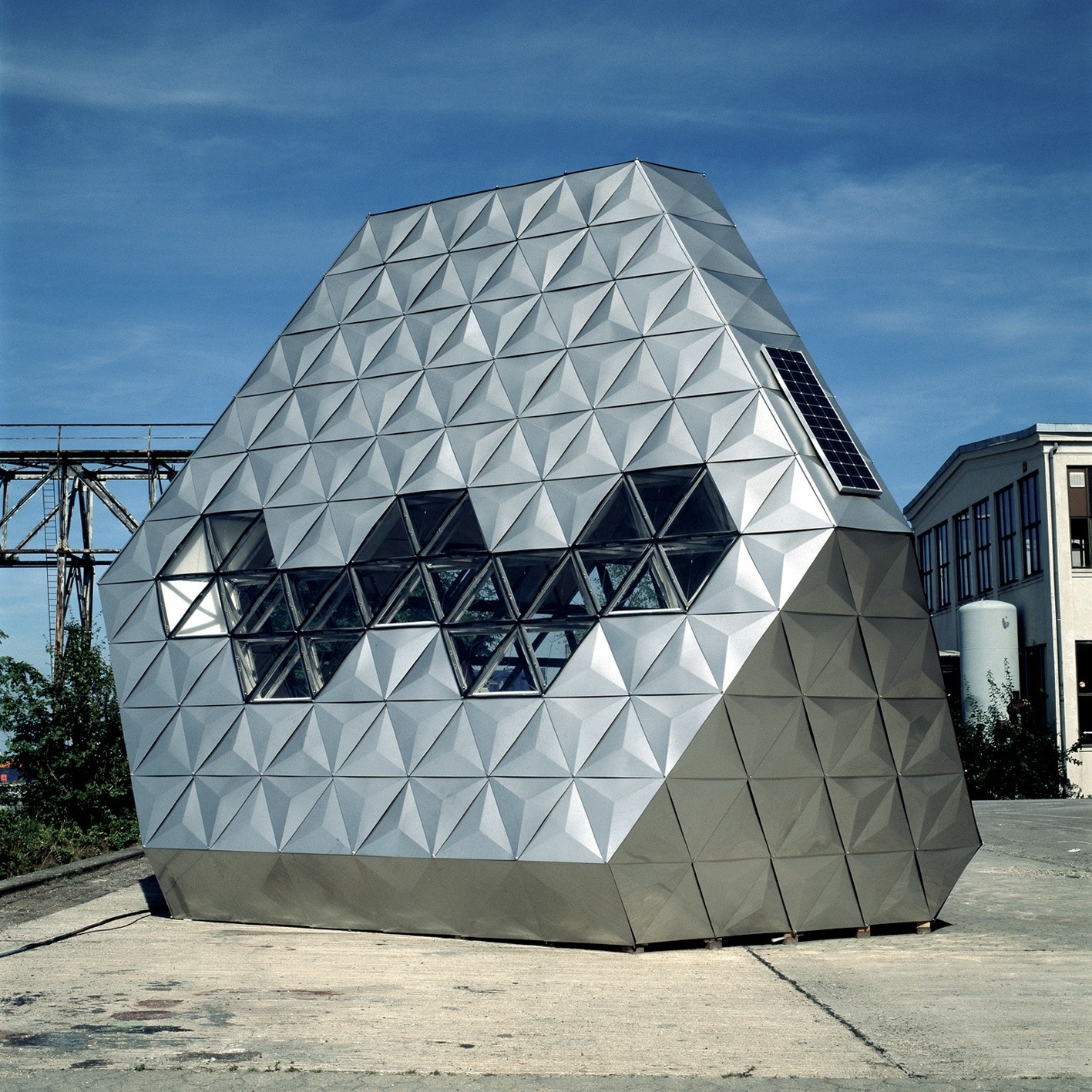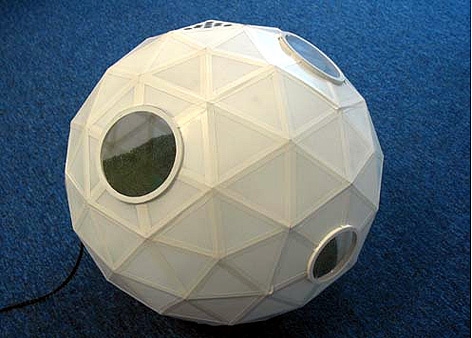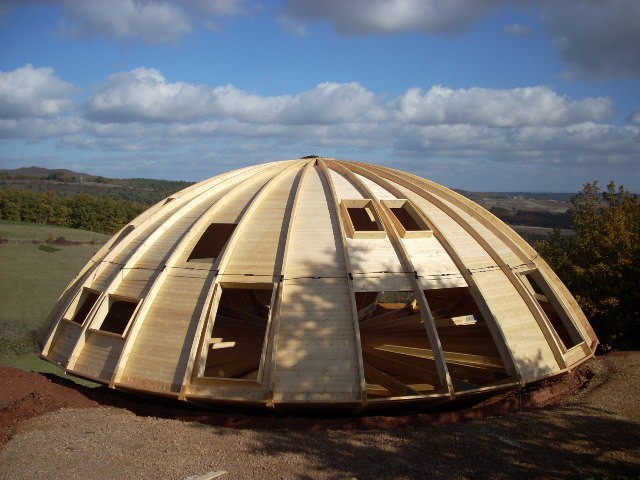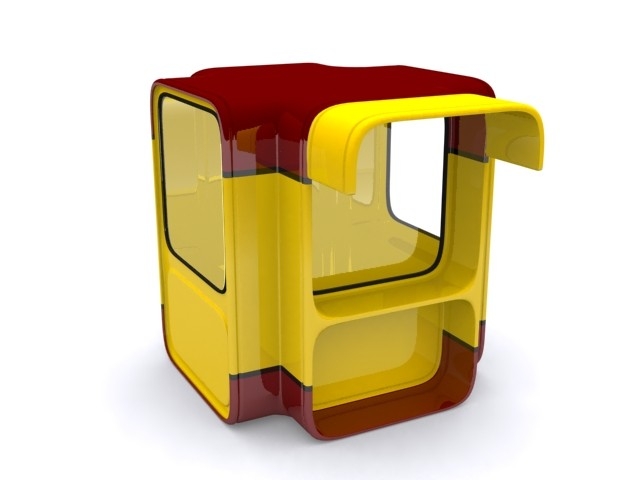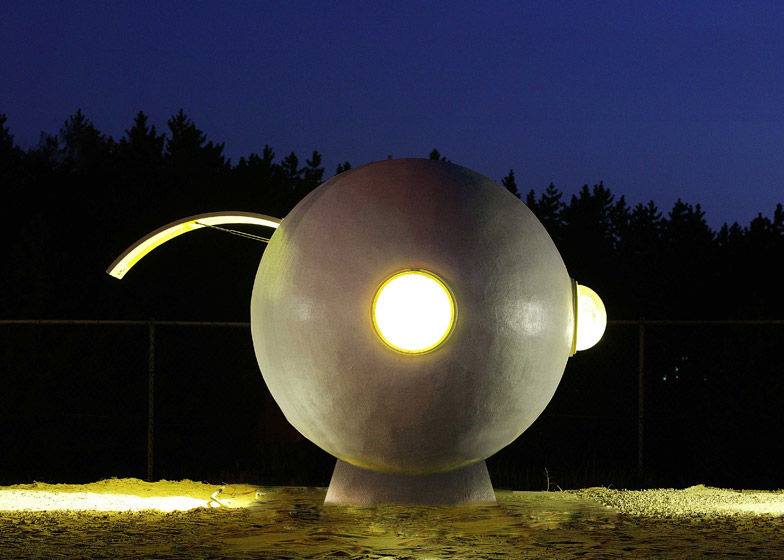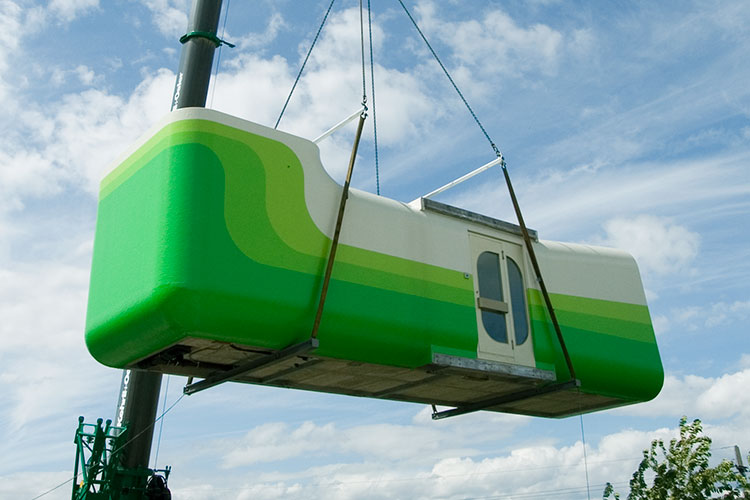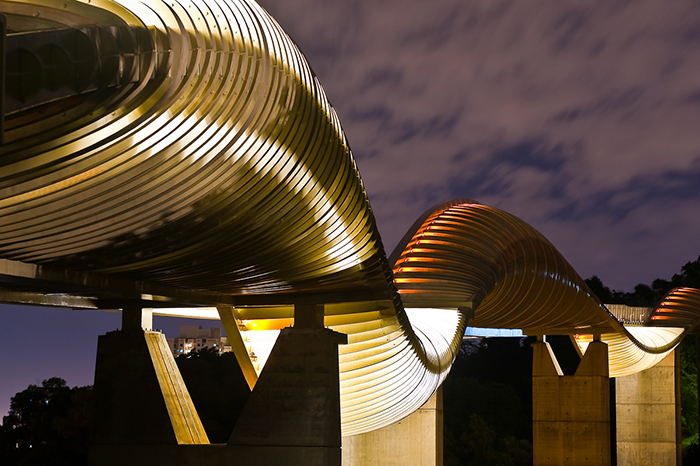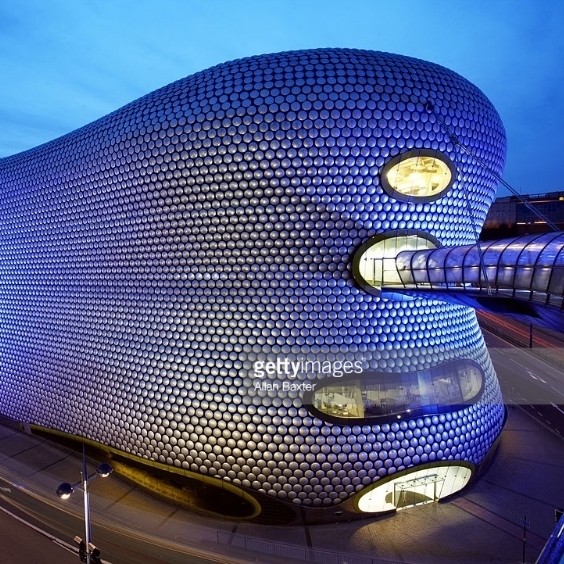N55 SpaceFrame – Walking House Copenhague Danemark 2000
The N55 SPACEFRAME
is mobile and lightweight lightweight construction that can easily be transformed. It is designed as a life unit 3-4 people and n & rsquo; virtually maintenance free.
The building can be erected by n & rsquo; anyone in a short time.
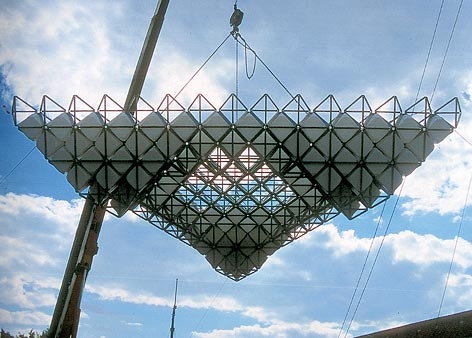
The FLOATING PLATFORM is launched with a crane. 2000.
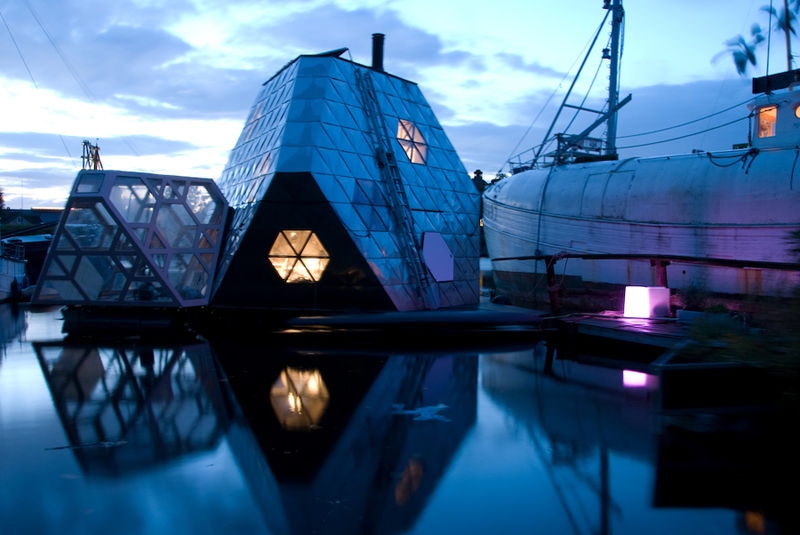
N55 tetrahedron floating house with the & rsquo; greenhouse extension.
FLOATING PLATFORM, N55 SPACEFRAME, Copenhagen, Denmark 2002
N55 Walking House
The Walking House is like an insect in motion – a system created for the nomadic life. It has a very good insulation and can move 120 m / h. Yes c & rsquo; is correct, it says “meters” per hour.
MICRO – ISLAND
a new system called micro-island.
MICRO DWELLINGS : is a d & rsquo manufacturing system; low cost homes of varying sizes for an unlimited number of people.
It consists of mobile housing modules which can form different configurations on earth, on & rsquo; water under the & rsquo; water. The system allows a variety of materials and changes and adaptations.
In collaboration with UC3 Nautilus, Copenhagen 2008
 |
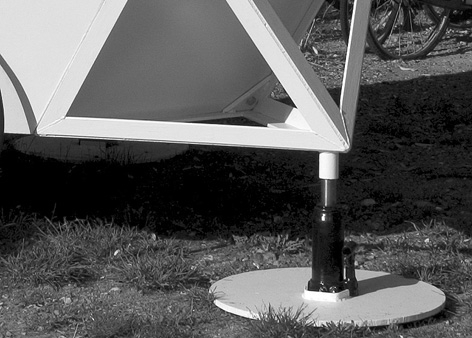 |
Technical specifications:
Base Module:
Height: 2, 3 meters
Width: 2,4 meters
Components List:
8 hexagonal plates and 6 steel square plates 4 mm, length singing 831 mm
Legs and steel frames 5 x 1,2 mm
3 hydraulic cylinders
3 d & rsquo plates; circular steel Ø 60 cm
3 steel rings, outside diameter 70 cm / inside 60 cm
3 steel rings, outside diameter 70 cm / inside 80 cm
3 polycarbonate sheets, Ø 75 cm10 mm Buttons
Bakelite, nuts and bolts
polyethylene foam, 50 mm
Rubber tapes
Epoxy
anticorrosion painting
Housing MICRO are modular, can be enlarged and lowered, and grow and grow with d & rsquo; other systems in small communities.
HOUSING MICRO can be constructed on the roofs of existing buildings or be suspended from a bridge or a wall. The modules can be mounted on wheels to become loose or be connected to form floating structures. As c & rsquo; is the case with the version shown in this manual, they can also be made as watertight amphibious houses in the & rsquo; water can be completely submerged or partially raised to the surface of the & rsquo; water. Most functions will be integrated into walls, and furniture, l & rsquo; household, etc. will be provided by mobile elements that change function during the day. The modules & rsquo; supply can be mounted to the & rsquo; outside the main modules.
HOUSING MICRO are able to reflect changes in life, for example, people entering and leaving, l & rsquo; children's arrival, etc., because it is easy d & rsquo; add to staged construction. If people want to live together, they can just leave their homes grow together, likewise, it is easy to separate the modules and move if desired.
MICRO HOUSING in themselves do not define a social constellation, but only provide the & rsquo; basic equipment that people can set up their own social context.
The current version of the system is made of d & rsquo plates; cheap steel and can be built by n & rsquo; anyone who knows how to solder.
Current techniques of construction of houses in the West have largely failed to integrate the knowledge of geometry that enables lightweight and durable construction that can be produced at a fraction of the cost of conventional homes. Lack & rsquo; innovation in this area can be attributed to the huge economic interests related to the & rsquo; real estate. Challenge familiar understandings in this area is considered a risk that is not worth the trouble & rsquo; be undertaken. However, the present situation creates considerable inequalities, where even people with an average income can afford d & rsquo; buy or rent housing in big cities and their suburbs. Therefore,
Making housing available cheaply reduce the need for higher income in order to live. This could in turn free up time for d & rsquo; other activities that the generator & rsquo work, money, This could have a positive social impact.
The concentrations can limit the & rsquo; access to land by force, among other things, the concept of property. Furthermore, l & rsquo; land use is highly regulated. Living on or under the & rsquo; water is a realistic alternative to life on earth. The underwater homes are particularly interesting, because they are hardly described in the existing building codes in Western countries and therefore difficult to control.
HOUSING MICRO consist of units of equal size in the form of truncated octahedra. The truncated octahedra fill l & rsquo; & rsquo space when they will be combined. They can also be attached with a variety of platonic and archimédiques forms in many combinations. L & rsquo; truncated octahedron is a stable construction to the plate, meaning that the construction, once assembled plates, n & rsquo; no need strengthening, because the plates themselves provide support (in the real world it depends on the size of the construction materials). The force is a combination of the stability of the plate and the & rsquo; space that occurs once the plates are joined along the edges.
The materials can be varied, but sustainability, robustness and low cost are critical parameters that must be balanced with each other. Each unit may easily be increased or decreased. The plates may be welded together or a method of & rsquo; nondestructive assembly may be used if & rsquo; is to be able to disassemble the building and back.
This version is welded steel with reinforcing members, allowing construction to withstand a pressure of up & rsquo; to 2 atmospheres, corresponding to a depth of 10 meters. However, investment 1 at 5 meters below the surface is sufficient for at that depth, light always enters the & rsquo; water and & rsquo; access easier. Welding the d & rsquo plates, steel, a sealed and watertight construction is obtained at the same time.
The plates were treated with the & rsquo; epoxy to & rsquo; outside and anticorrosive paint to & rsquo; inside and finally insulated with polyethylene foam plates. Door with lock. The windows and doors also function as d & rsquo ports docking with d & rsquo; other modules. removable legs mounted on hydraulic cylinders.
WaterPod 2009
PUP Architects, the London-based architectural firm, designs a micro-house based on an air duct unit.
A unique design !
Built on top of a London building, the H-VAC micro-house was designed and built as part of the international Antepavilion competition. The philosophy behind Antepavilion is to create affordable and inexpensive housing ideas for the City of London, and the H-VAC was the winner of this edition among the few 128 projects in the running. The design of the H-VAC was inspired by an air duct unit, which is common on the roofs of the city. Selon PUP Architects, the idea for this construction came from the fact that local planning laws stipulate that mechanical equipment on the roof can be built without special permission. Therefore, disguising a home as an air duct seemed like the perfect way to get around London's extremely strict housing regulations..
